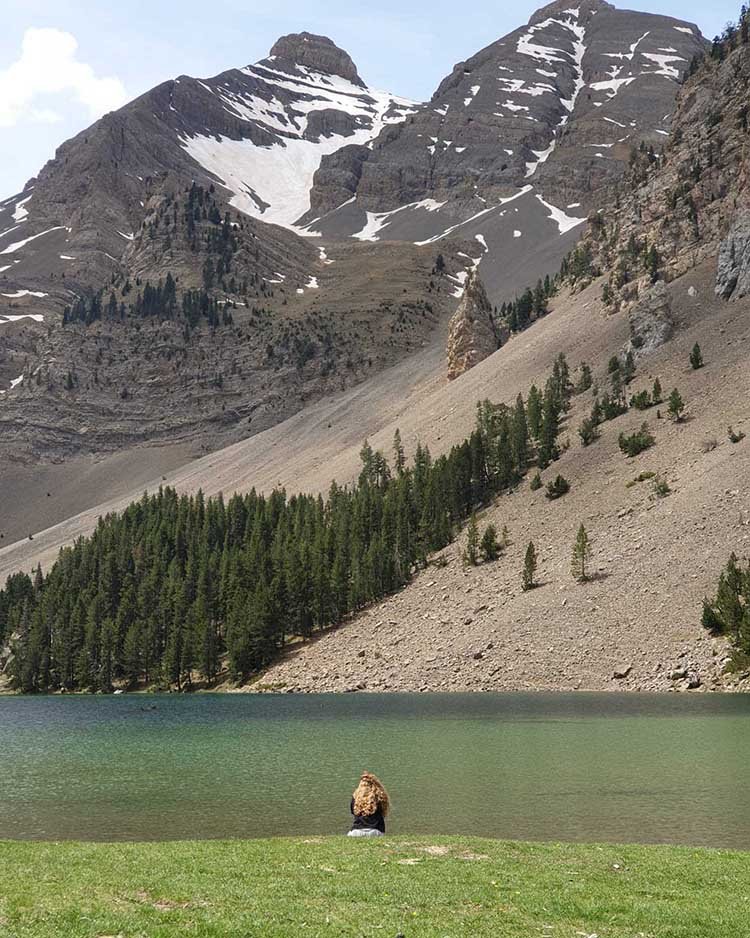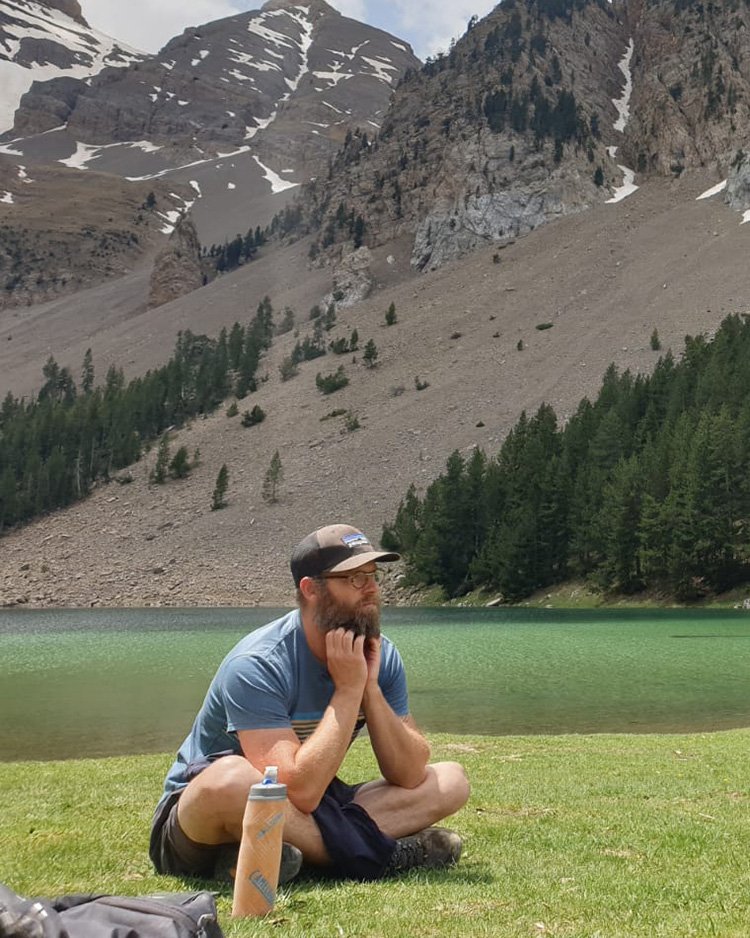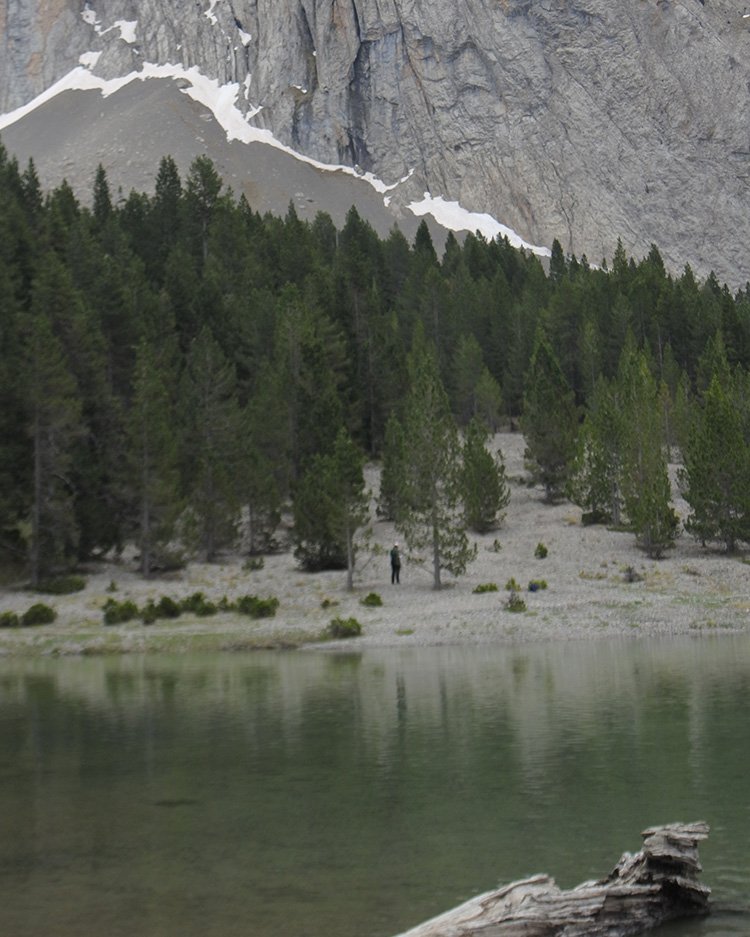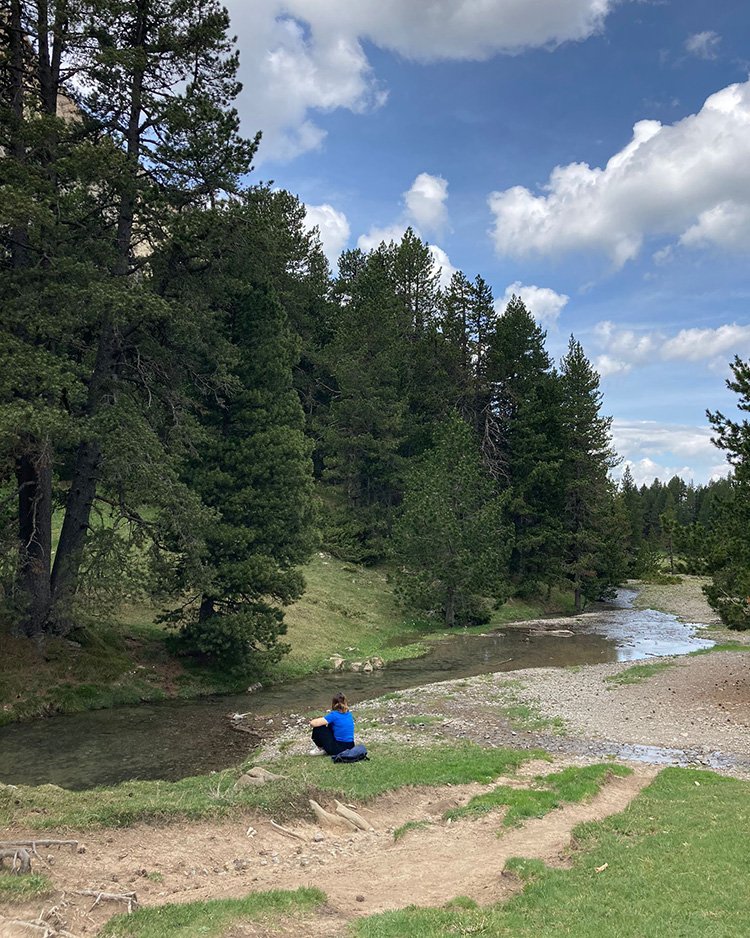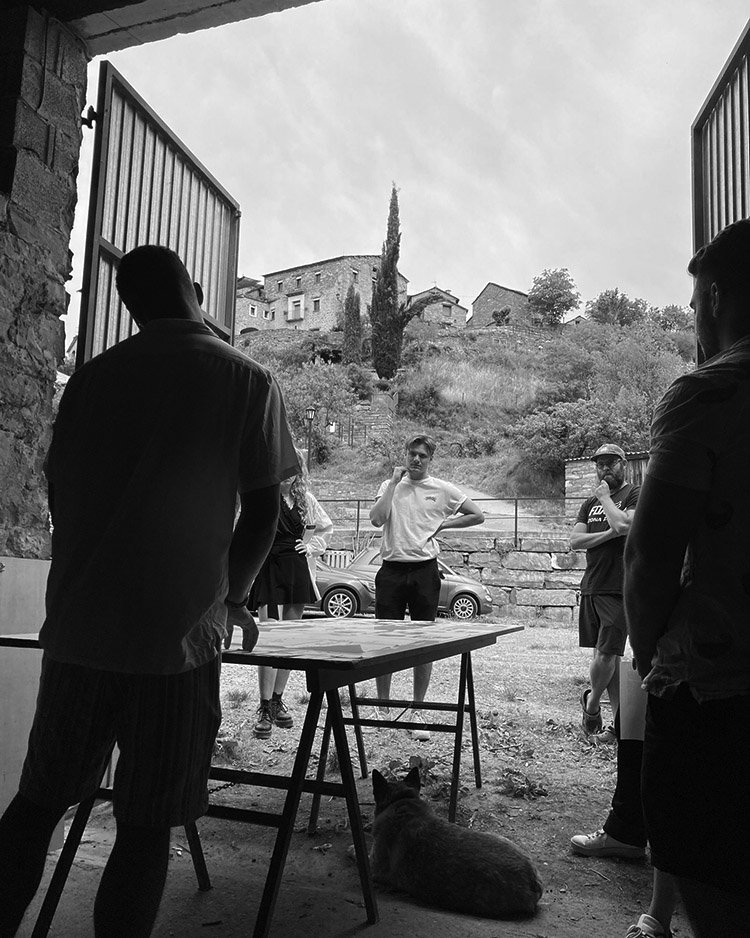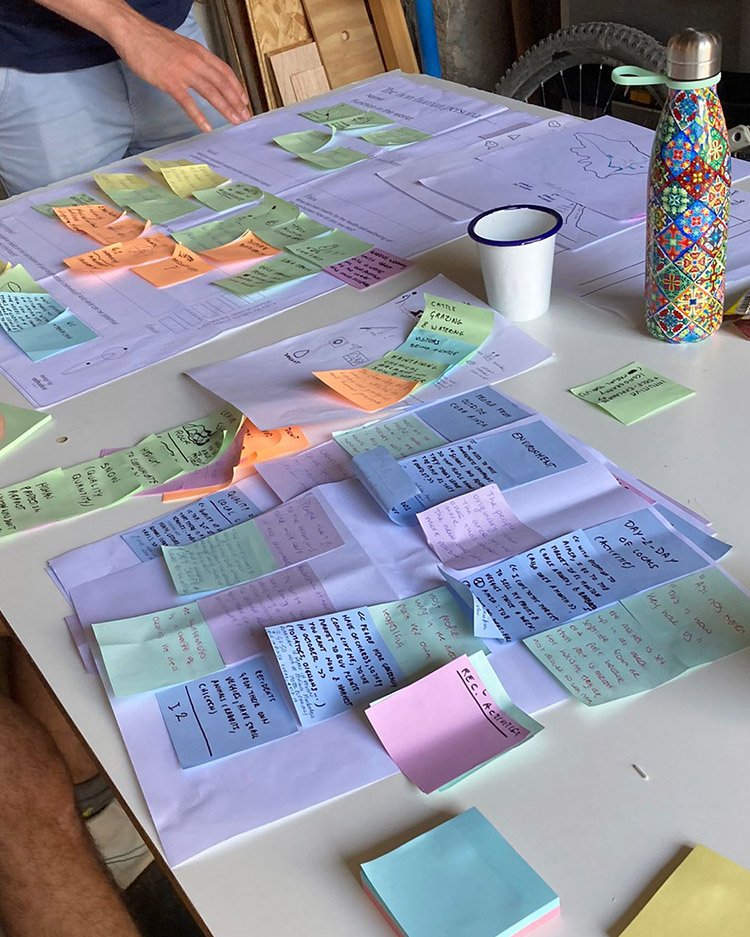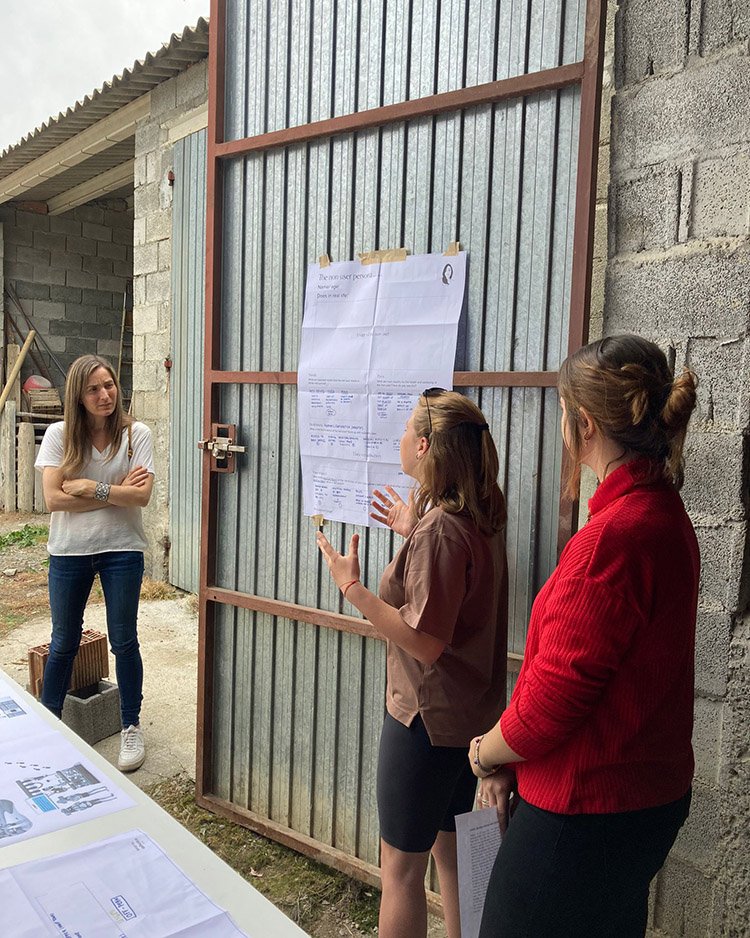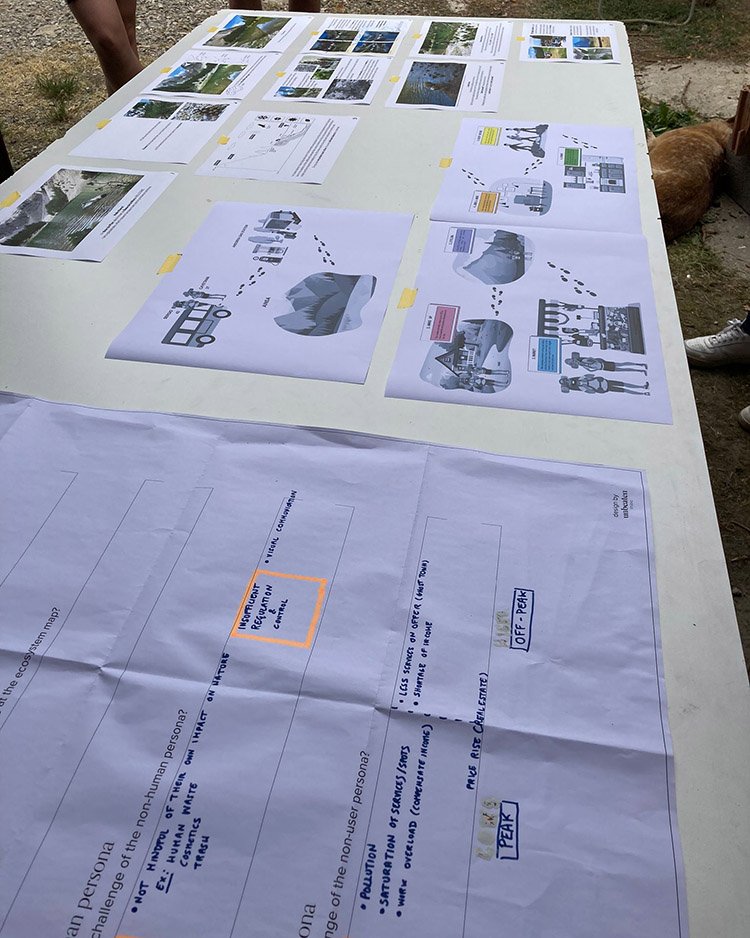How to create a Non-Human Persona?
I first read about Non-human personas via Monika Sznel, who developed a non-human persona from the Baltic Sea and Damien Lutz, who developed several Life-Centered Design tools. I used their work as inspiration for creating the Unbeaten Studio version when we made our Life-Centered Design in Action workshop. Recently we had the opportunity to create a non-human persona about a beautiful mountain lake Ibón de Plan.
These are the steps I took to create the non-human persona of Ibón de Plan.
1. Create an Ecosystem Context Map. We created a ecosystem context map about the tourism industry in Aínsa - Sobrarbe with a Marta Olcoz representative from the Aínsa townhall, Jorge Ruiz de Eguilaz from the mountain bike centre Zona Zero Pirineos Isabel Santolaria from video production company Osole Visual and design students from The University of Applied Sciences Utrecht and the Fundamentals Academy.
From the ECM, we picked a non-user persona, who I will describe in another article, the natural habitat Ibón de Plan as a non-human persona.
2. Immerse. With five students, we went to Ibón de Plan. After we had parked our car at 1900 meters, it was a 30-minute walk to the lake. We walked in silence to really immerse ourselves in the natural surroundings with all our senses.
We reflected on our silent walk when we arrived at Ibón de Plan. It was perfect preparation for our next experience, connecting with the lake and its surroundings. Individually the students choose a spot at the lake, near the trees or at a little stream to communicate with the elements of the lake's habitat. Some things they experienced were:
Nature protects nature - a rock was preventing a tree from falling.
The lake is laughing with the pebbles that tickle.
People are not moving at the pace of nature - in this case, an e-bike that was disturbing the peace.
The lake is of service- Its service reflects the sky, the surrounding mountains and trees.
3. Do Scientific Research. This type of persona is a combination of emotional narrative and scientific research. To truly understand our impact, we must look into scientific numbers, talk with experts and read articles. We need to look at the meta-, meso- and micro-level.
4. Collect Insights. After our immersion in the lake, we used the Non-human persona map to collect our first insights and see what information we were missing and what needed more research.
5. Create Emotional Narratives. So far, scientists and activists haven't been able to turn the tide regarding climate change. Maybe because we don't emotionally connect to nature, the non-human persona might help with this as it adds an emotional layer to the scientific research. By emotionally sharing the story of natural life and natural habitats, we create a connection and a feeling of responsibility.
”Narrating emotions helps us to express, understand, and share them: the way we tell stories influences how others react to our emotions, and impacts how we cope with emotions ourselves- source Emotion and Narrative Perspectives in Autobiographical Storytelling by Tilman Habermas”
6. Communicate. The non-human persona can have many forms, such as images, video, audio, infographics, a theatre play, posters, a website, an article, visual stories or combinations. For Ibón de Plan, we created two web pages, one with an audio file and the other one with an essay, both combined with images of the lake. How you communicate your Non-Human persona depends on its purpose and audience.
7. Use a Non-Human Persona. What is the role of these personas within Life-Centered Design? I believe they are several.
They can provide design criteria for design projects that aim not to damage our planet.
You can use them as an impact measurement tool in time. You would create a persona on moment 0 to see the environmental status and a second one on moment X to see if there is change over time after trying to reduce impact.
They can be a stand-alone communication tool to share the state of a specific non-human, be it nature or non-nature. And to create public awareness.
They can convince and inspire brands, companies and governments to change the way they work and drastically reduce their negative impact.
The non-human persona is not THE solution to save the world, but it can get us closer to nature and gives us a better feeling of what we do to nature, and it shows where we can do better.
If by now you got excited to start and create non-human personas yourself, download the tool and feel free to contact us if you have any questions.
Author: Jeroen Spoelstra
Images: Jeroen Spoelstra, Tatiana Levi Tutte, Georgi Furnadzhiev, Nadège Martins Fortes, Dana Tinsky Roif, Merun Gugelmann, Noortje Braaksma and Jasper van ‘t Wel.


